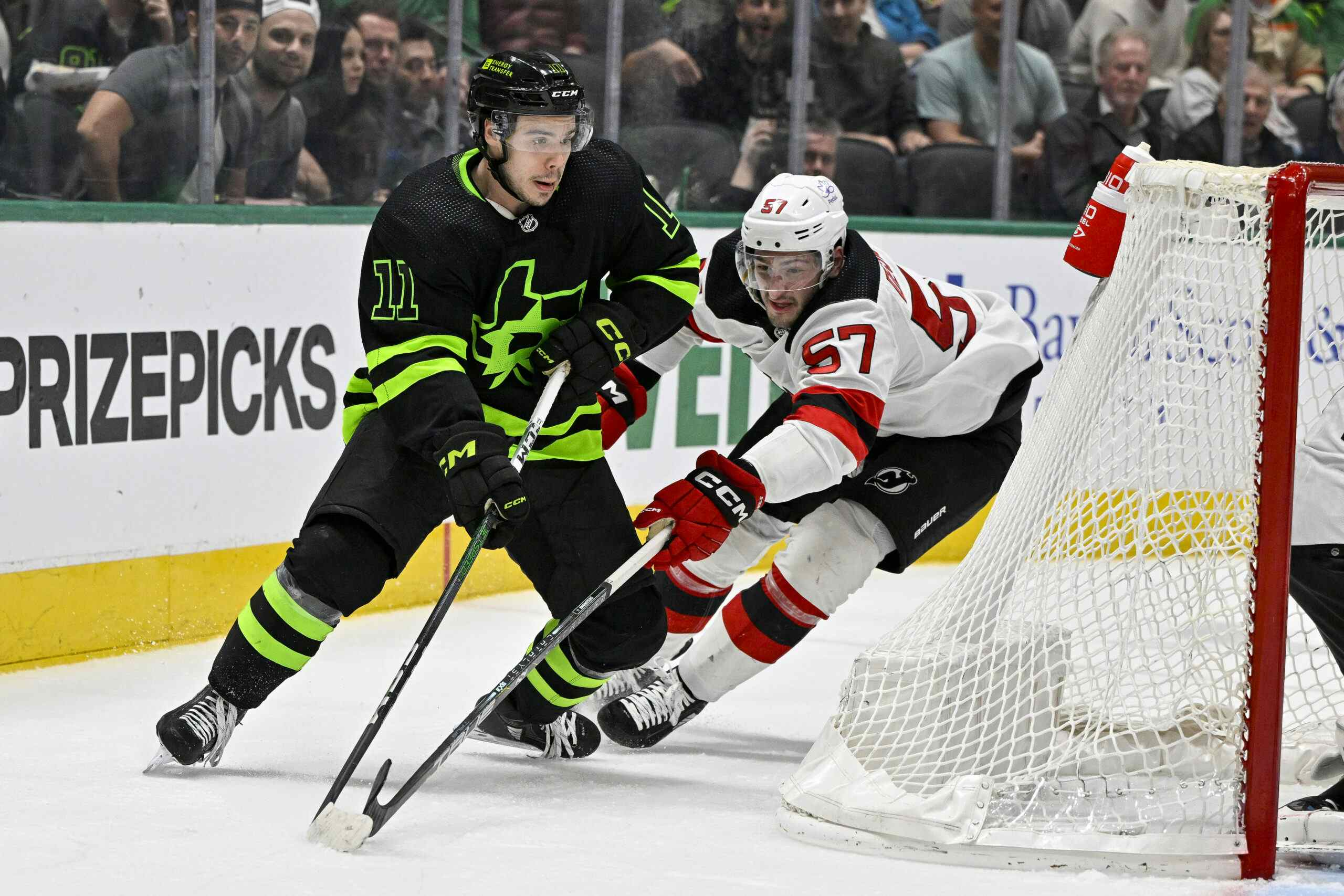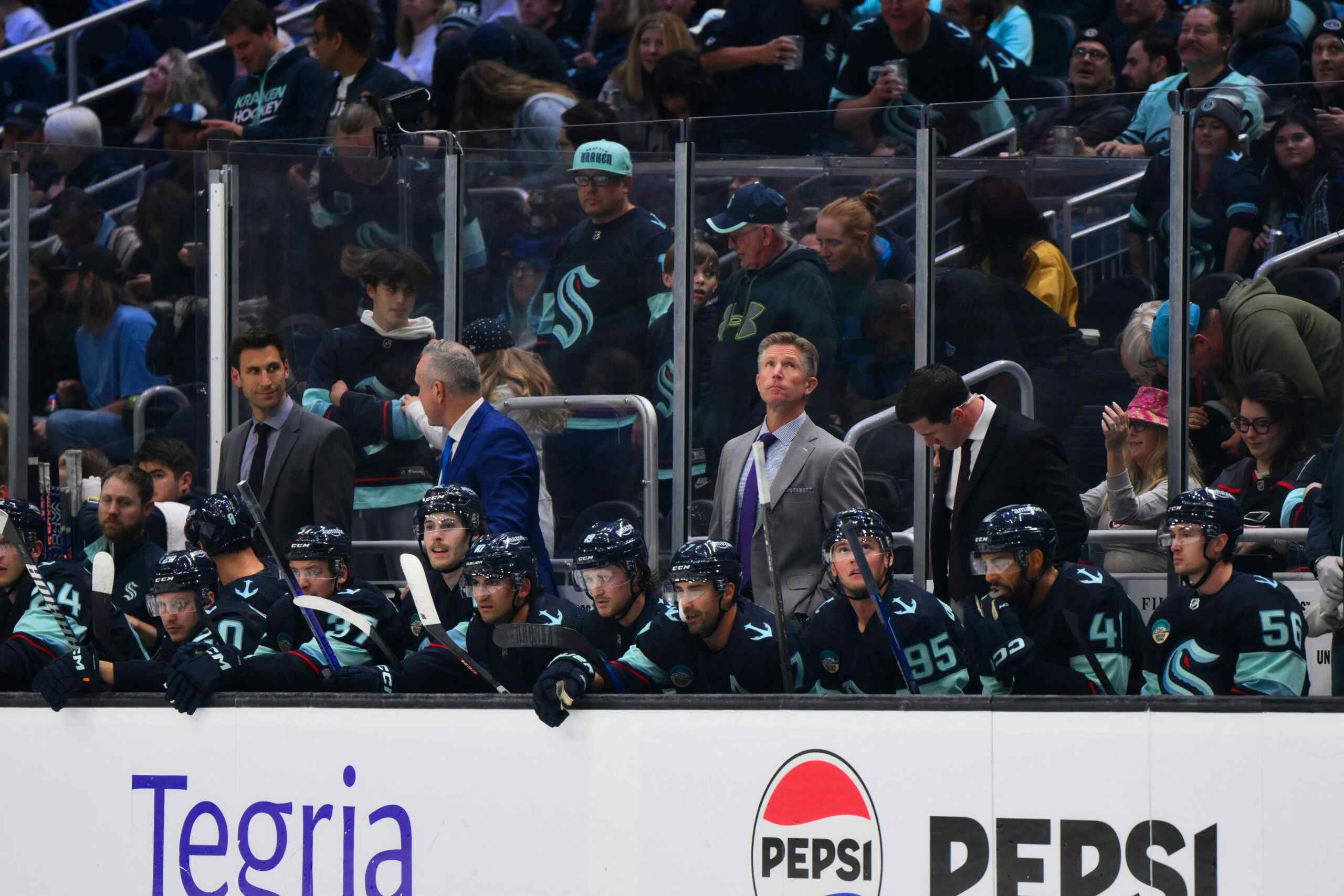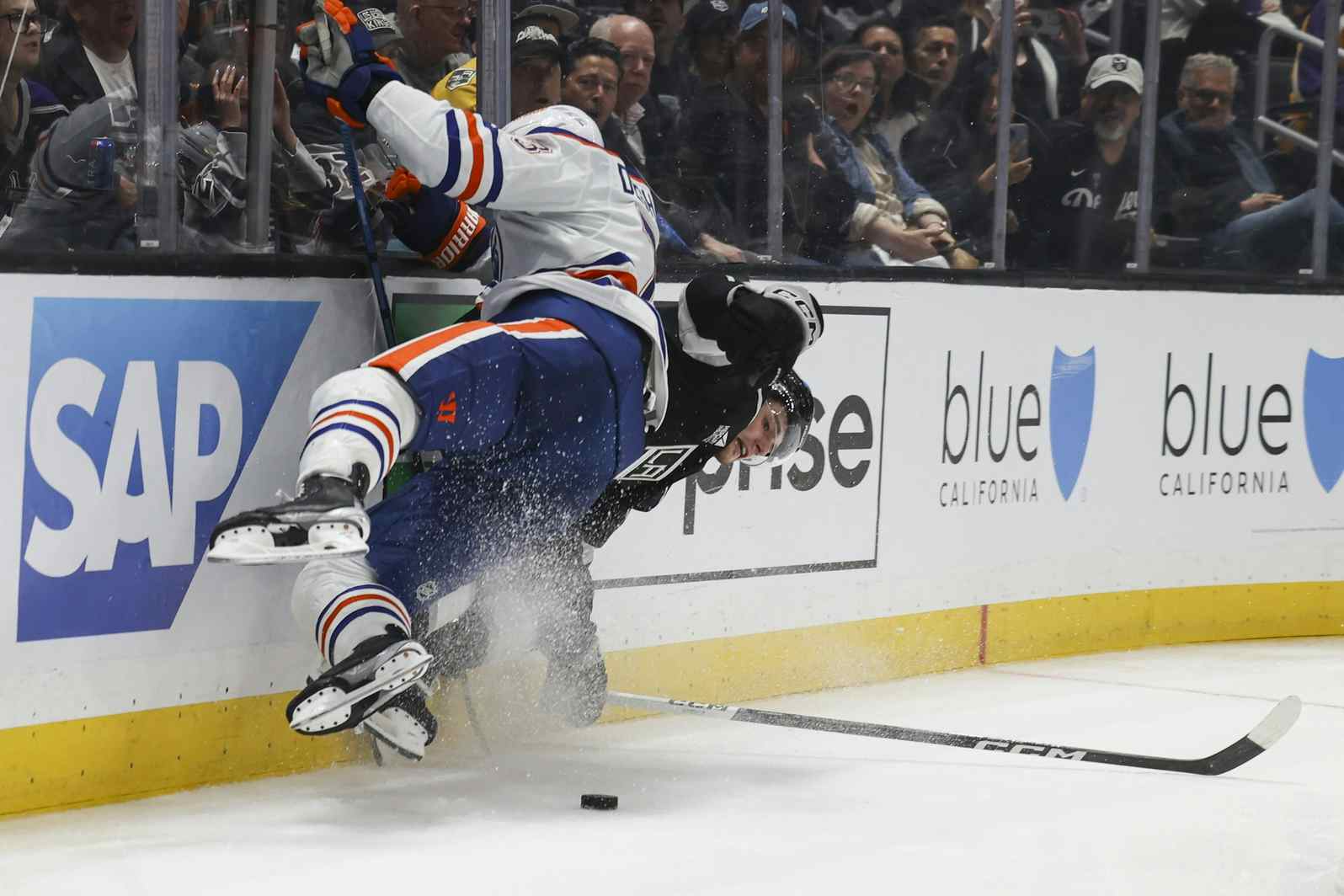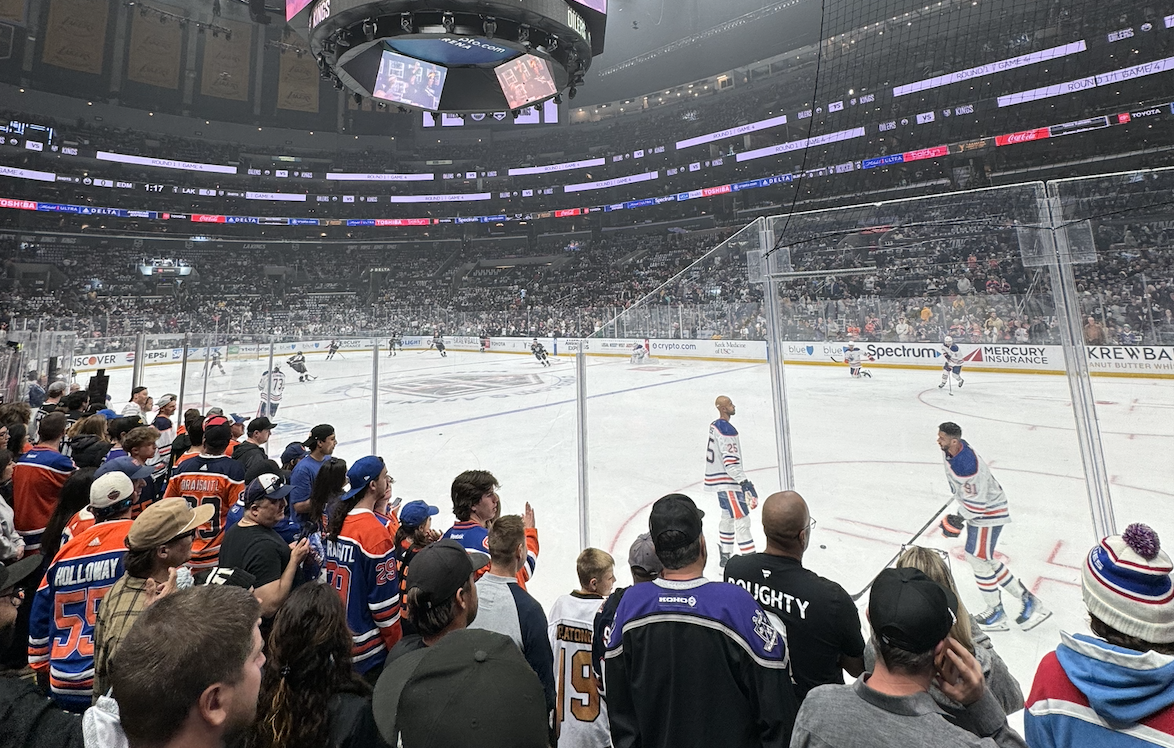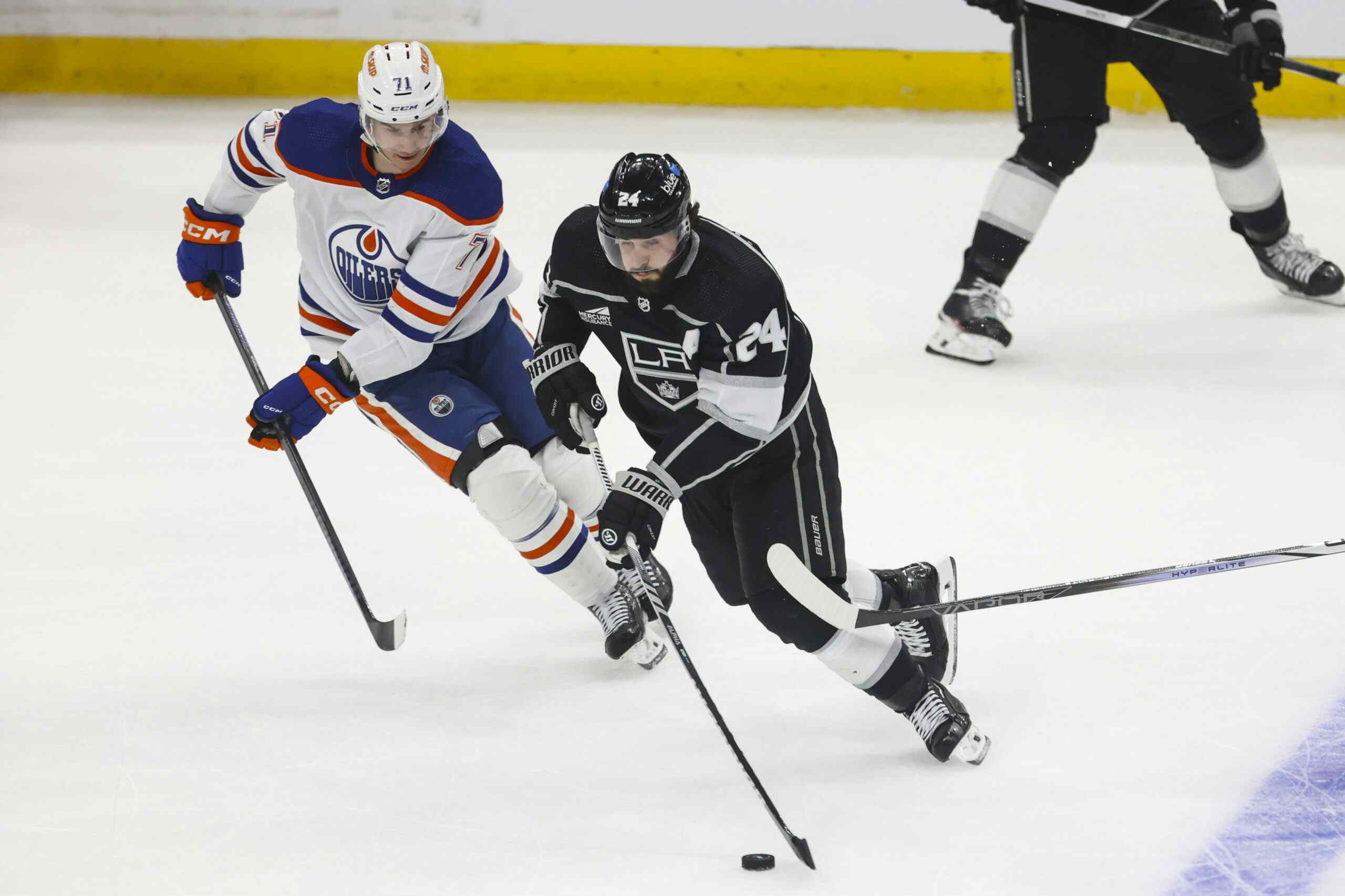Big Decisions: The Chris Pronger Trade

Officially, the Edmonton Oilers rebuild started midway through 2009-10, as a team built to make that last push for the playoffs imploded spectacularly, finishing last in the NHL. Unofficially, the real trigger was the departure of the catalyst from the 2006 run, Chris Pronger. In the Pronger trade, the Oilers acquired good value in terms of assets, but terrible value from a ‘win right now’ perspective.
More than any other action, arguably it was the Pronger trade that set the Oilers on the course they are now.
In some ways, Kevin Lowe’s hands were tied. Pronger demanded the trade, and suddenly Lowe faced the ugly reality that his franchise cornerstone wanted to leave town.
In the end, however, the decision not to force Pronger’s hand – refusing to deal him without something adequate for the here-and-now, daring him to welsh on his contract and forfeit the money until some team coughed up a solid defenseman – cost the club. Jason Smith was fifth in ice-time on the 2005-06 club; he led the way in 2006-07. Ladislav Smid, who would spend time in the minors a year later, was number two. Reserve 2005-06 defender Matt Greene finished third. Things were ugly.
Oilers fans lived through the aftermath, so there’s no need to spend a lot of time there (it was so bad that many of us foolishly thought things weren’t going to get worse).
The long-term payoff for suffering through 2006-07 was in terms of overall assets. The Oilers landed five (FIVE!) assets in exchange for Pronger – one of them a conditional first round pick if the Ducks won the Stanley Cup, which they went on to do. Those assets were as follows:

Joffrey Lupul – A sheltered 28-goal scorer in Anaheim, Lupul was tossed into the fire in Edmonton and had one of the most miserably underachieving seasons imaginable. The total disappoint was shuffled off to Philadelphia (along with Jason Smith) for Joni Pitkanen, Geoff Sanderson and a third round pick. Sanderson retired as an Oiler, the Oilers burned the third rounder on a player Philly would approve of (Cam Abney) and Pitkanen was sent away for Erik Cole.
Cole was then swapped to Carolina (along with a fifth-round pick) for Patrick O’Sullivan and a second-round pick. The second round pick was used to rent Ales Kotalik, while O’Sullivan went to Phoenix in exchange for Jim Vandermeer. After one season, Vandermeer left for free agency.
Bottom line: A terribly disappointing Lupul begat a disappointing Pitkanen who begat a disappointing Cole who begat a terribly disappointing O’Sullivan who begat Jim Vandermeer who begat nothing. The central piece of the Pronger return provided no long-term value to the team.

Ladislav Smid – The Oilers, whether out of a desperate need for help on a depleted blue line or a desperate need to justify the Pronger trade rushed Smid into the NHL in 2006-07 before he was ready; the next year he spent some time in the minors before coming up for good. Over 300-odd games, the Oilers slowly developed him from a third-pairing liability to a useful second-pairing guy, until 2011-12.
This season, paired with either Jeff Petry or Tom Gilbert, Smid blossomed into a physical, shut-down defenseman, a player well worth the wait and one the Oilers were lucky not to have given up on. It’s frightening to think how things could have been different – in the summer of 2009 he was offered as part of a package for Dany Heatley.
Bottom line: The Oilers spent a long time developing the player, but the raw talent was there and the decision has finally started to pay off in a big way with a player who should be a fixture on the blue line for at least the next five years.
1st Round pick in 2007 – The Ducks won the Stanley Cup in 2007, so the Oilers ended up with the 30th overall pick. They packaged that along with their second rounder (36th overall) to move up to #21, where they selected forward Riley Nash. Riley Nash was eventually sent away for a second round pick, a pick used on prospect Martin Marincin.
Bottom line: The Nash pick didn’t work out, but Marincin’s a fine prospect.

1st Round pick in 2008 – As Brian Burke repeatedly said (with no discernible sarcasm), Lowe negotiating the conditional pick was a great move on his part. At the time, that wasn’t so obvious, but the player the Oilers ended up with – Jordan Eberle – made it very true. Of course, having that additional pick also made the Oilers comfortable enough to use their own pick in the Dustin Penner offer sheet (a decision which cost them the selection eventually used on Tyler Myers) but then that’s a different transaction.
Bottom line: The conditional pick that the Oilers would not even have received had all those people cheering against Pronger in Anaheim had their way turned out to be the best part of the deal. Jordan Eberle is regarded as one of the primary building blocks in the current rebuild.
2nd round pick in 2008 – The Oilers never made this pick (Travis Hamonic), instead trading it to the Islanders in exchange for a third-rounder and Allan “Hot Doorknob” Rourke. The reason they made that trade was because they needed their own third round pick (previously dealt to Long Island) to make an offer sheet to Dustin Penner.
FINAL TALLY
In the end, the Oilers ended up with two key pieces of the current rebuild: Jordan Eberle and Ladislav Smid, as well as prospect Martin Marincin. If Joffrey Lupul hadn’t flamed out so badly – and if the Oilers hadn’t reversed the one red paperclip in their subsequent trades – they could have ended up with more. All in all, if one chooses to ignore the streak of futility (which still hasn’t ended) that the team has suffered through post-Pronger, the Oilers did well in terms of generating value out of the player.
On the other hand, it was the failure to turn the tremendously valuable Pronger – he really should have won the Conn Smythe in 2006 – into immediate value that really destroyed the team. Other things – the exodus of players like Spacek, Peca and Samsonov – hurt, but in Pronger the Oilers could have immediately addressed their blue line. They chose to put that off, and the key player they got offered no lasting value. Gutting the team in that way laid much of the groundwork for the 2009-10 implosion.
For both good and ill, much of the current rebuild can be traced back to the Pronger trade.
Recently by Jonathan Willis
- Report: Justin Schultz leaves school
- The Los Angeles Kings: Road warriors
- The Oilers don’t need a stud defenseman now
- Rookie forwards of 2011-12
- Organizational need is a bad way to draft players
- Big decisions: Taylor Hall over Tyler Seguin
- Could the Oilers address the defense with their second pick?
- The obsession with protection
- Should the Oilers go after Jordin Tootoo this summer?
- Cameron Abney: probably not Stu MacGregor’s fault, but a poor pick all the same
Recent articles from Jonathan Willis

